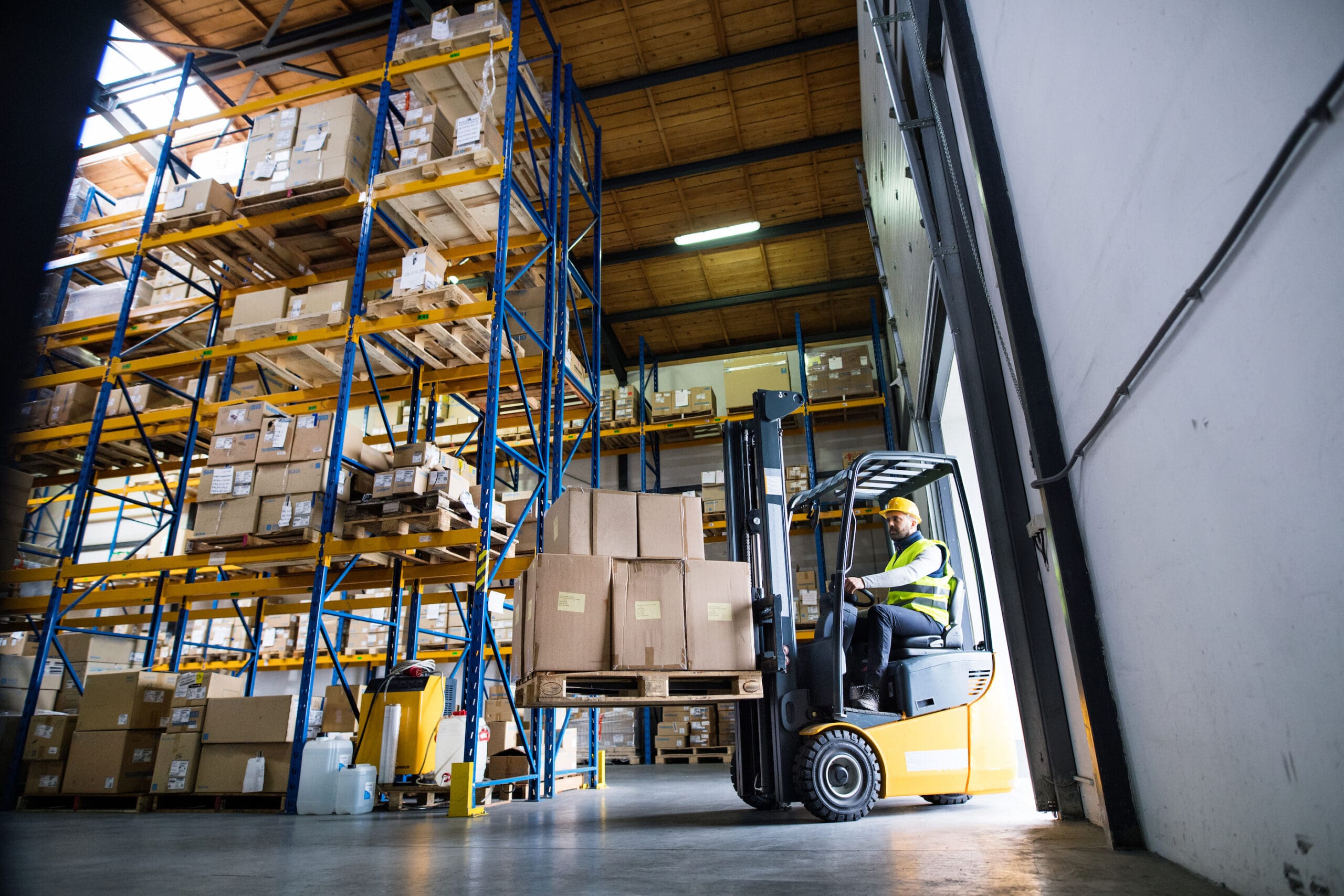The efficiency of your warehouse picking operations has an impact on efficiency and order accuracy, and it’s a major component of the ecommerce supply chain.
Being able to pick as many orders as possible in a short amount of time can significantly speed up your fulfilment operations and result in faster deliveries.
In this guide, we show you how you can optimise your warehouse picking rate to improve your fulfilment speed.
What is picking rate?
Picking rate refers to the number of items that are picked every hour in a warehouse.
It’s an important measure of how efficient your warehouse operations are because when orders are picked quickly, it means that your pickers are able to easily identify and retrieve items to fulfil orders quickly and accurately.
The faster your picking rate is, the faster you can pack orders and get them out the door for shipping.
Why picking rate matters
Your picking rate plays a crucial role in the speed at which other fulfilment processes are carried out.
When items are picked efficiently, that means they can quickly be transported to the packing bay, which gives the packing team more orders to work with. If the packing operations are just as efficient, that means more orders can be ready for shipping.
So your entire order fulfilment operations are also sped up, allowing you to fulfil more orders in a shorter amount of time. This can result in cost savings, which also contribute to overall profitability and growth for your business.
Moreover, it means you can deliver more orders in a timely manner. This will lead to increased customer satisfaction, which therefore impact future sales. The more satisfied your customers are, the more likely they are to come back and remain loyal to your brand.
How to calculate picking rate
Picking rate is calculated by dividing the total number of items picked by the total number of hours spent on picking. The following formula is used for calculating picking rate.
Picking Rate = Total Picks/Total Time Spent
For example, if 400 items are picked during an 8-hour shift, the picking rate is as follows:
400/8 = 50
Based on this example, 50 items are picked per hour.
The role of a warehouse management system (WMS) in improving picking rates
Warehouse management systems (WMS) provide businesses with more inventory visibility throughout their warehouse operations, so they can take better control over various processes.
Solutions such as ShipBob’s WMS allow businesses to accurately keep track of where each item is stored within the warehouse. This helps pickers easily locate items that need picking, which significantly speeds up the picking process.
WMS technology is also designed to automatically generate picking lists by calculating optimal picking routes to reduce last-mile delivery timelines. That way, pickers can easily move between different pick locations in the shortest amount of time possible.
This also allows pickers to retrieve more items in a shorter amount of time, thus improving your picking rates.
Use of advanced technology in improving picking rates
Smart warehousing is the incorporation of advanced technology (artificial intelligence (AI), machine learning, and robotics) to improved speeds and accuracy.
For instance, ShipBob’s WMS uses AI and machine learning to easily identify opportunities for improvement by analising optimal picking methods based on warehouse setup.
This helps to identify whether batch picking, single-order picking, auto-cluster method, or custom cluster options would be best for your warehouse.
The WMS also calculates the optimal route that pickers must follow to minimise travel time. Based on this calculation, it automatically generates picking lists that are optimised for efficiency.
Furthermore, WMS makes it easy to integrate inventory tools, such as barcoding to accurately record inventory data in real time, including where to locate it in the warehouse.
5 tips for improving picking rates
Warehouse technology is just a small part of the puzzle when it comes to improving picking rates.
Factors such as your picking strategies and warehouse layout can also make a difference in picking performance.
Let’s take a look at some of the top tips to improve your picking rates.
1. Optimising warehouse layout
The layout of your warehouse is one of the biggest factors determining the efficiency of your picking operations.
If your warehouse is set up in a way that prevents workers from moving efficiently between different picking zones, there’s a good chance it will negatively impact your picking rates.
It’s important to take a closer look at your warehouse layout and identify opportunities to improve it.This would involve organising the layout keeping in mind the natural flow of activities for your pickers.
Each area of the warehouse should be set up in a way that logically progresses according to the different stages of the picking process. For instance, high-demand items should be stored in closer proximity to the packing area so that you can minimise travel time.
Since pickers have to frequently pick these popular items, reducing travel time can significantly boost your picking rates. This is where it helps to segment items based on demand in addition to other segmentation methods such as type or size.
It’s also important to organise your aisles so ample space is available for workers to move around efficiently. This can help to prevent congestion, which is a leading cause of slow picking times.
It’s also worth considering the use of bins and other containers that will help you to neatly organise your inventory, which will make it easier for pickers to retrieve items and speed up the picking process.
2. Implementing effective training programs
The right knowledge and expertise can go a long way in helping your pickers to efficiently complete their tasks. It’s crucial to provide sufficient support and training to equip your workers with essential skills to optimise the picking process.
The more well-versed your pickers are on how to locate, retrieve, and transport items in the warehouse, the faster they can pick items from their assigned picking lists.
Implement training programs that not only educate pickers about the picking process but also teach them how to make the most of available tools, equipment, and technology to improve their performance.
Don’t forget to train them on warehouse safety so they can avoid accidents that could hold up the picking process and other warehousing operations.
3. Utilising incentives for motivation
You can’t speed up your picking operations with a team of pickers who lack the motivation to work. Poor hours and long physical shifts often lead to disgruntled pickers who might be prone to slacking off as they work on their picking lists.
This results in slower picking speeds and lower picking rates, which impact the rest of your fulfilment operations.
It’s important to boost team morale by creating optimal working conditions for your pickers and prioritising their mental and physical well-being. This may involve optimising schedules and adjusting their working hours without compromising warehouse productivity.
Quality warehouse management processes that make employees a high priority motivates teams and improves performance.
4. Setting your pickers up for success
Beyond regular training sessions, it’s important that your pickers are equipped with the necessary tools to make their jobs easier.
As discussed earlier, technology and equipment can easily improve picking accuracy.
For example, automated conveyors, electrified monorails, and automated storage and retrieval systems (AS/RS) can significantly speed up the process of retrieving and transporting items.
Picking lists based on optimal picking routes can minimise travel time and streamline the journey for your pickers. You can also use tools like voice-picking devices, pick-to-light systems, and RF scanners to allow for easy identification and guide pickers to the right location.
5. Implementing the right picking strategies
The right picking method can make a huge difference in your picking speed. This depends on various factors such as product mix, warehouse layout, and order volume.
Some warehouses may benefit from zone picking whereas others may find batch picking more efficient.
For example, ShipBob’s WMS helps you analyse the ideal picking strategy that would work specifically for your warehouse to improve your picking rate.
Navigating the future of picking rates with ShipBob
With limitations in expertise and resources, many ecommerce businesses struggle with low picking rates that affect their overall fulfilment efficiency. ShipBob offers a WMS solutions as part of their omnichannel fulfilment services,
ShipBob’s WMS is designed to help business owners optimise their logistics operations, whether it’s used to improve in-house fulfilment or the entire warehousing and fulfilment operations are outsourced to ShipBob.
Before we implemented ShipBob’s WMS, our order accuracy rate was around 92%. Now we’re at 99.7% for order accuracy, which equates to 2,100 less mispicks a year on average. When misshipments happen, we typically let customers keep the products because it’s more work to have them return the items.
So ShipBob’s system for picking orders has cut down on labour costs, reduced lost inventory, and eliminated the need for double shipping. That’s been huge for us. Our order picking and routing has also greatly improved with ShipBob.
Jourdan Davis, Operations Manager at Pit Viper
When you outsource fulfilment to ShipBob, you can achieve higher picking rates and increased accuracy that allow for timely shipping. In fact, 99.96% of orders ship on time and our fulfilment accuracy rates stand at 99.95%.
Even for businesses that manage their fulfilment in-house, ShipBob’s warehouse management system allows you to drastically speed up your picking process.
The WMS calculates optimal shipping routes to minimise travel time and automatically generates picking lists according to this calculation. It also makes suggestions on the best picking strategy for your unique needs so you can achieve higher picking rates, which eventually lead to faster fulfilment.
“Prior to ShipBob, we’d ship 300 orders/day. One of the first nights, we shipped 700 orders in the same timeframe.”
Rick Corbridge, COO at Infuze Hydration
Picking rate FAQs
Below are answers to the most common questions about picking rates.
What is a good picking rate?
A good picking rate is about 71.42 items per hour, which is the industry average, according to warehouseandfulfilment.com.
How can warehouse layout affect picking rates?
Warehouse layout influences how pickers move in the warehouse and travel between different pick locations, which then affects the speed at which they pick items.
What are the common challenges faced by pickers in warehouses?
Disorganised warehouse layout, inefficient picking strategies, and items not in the right place are some of the main challenges faced by pickers in the warehouse.
What technologies are being used to improve picking rates?
Warehouse management systems, inventory management tools, barcode scanners are commonly used to improve picking rates.



